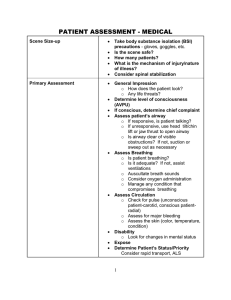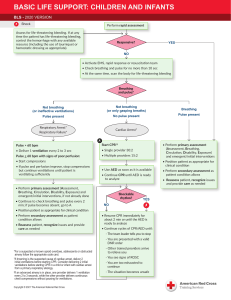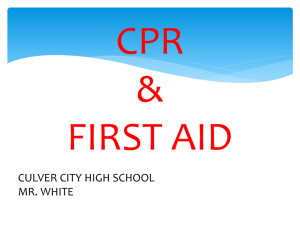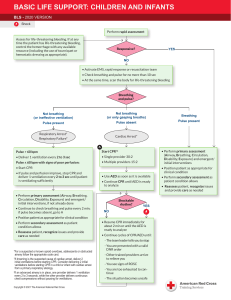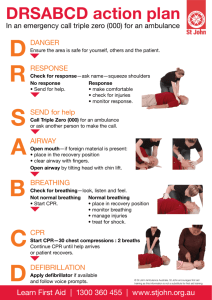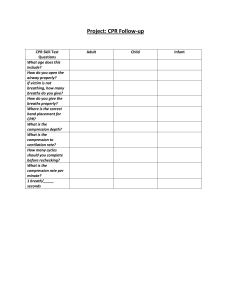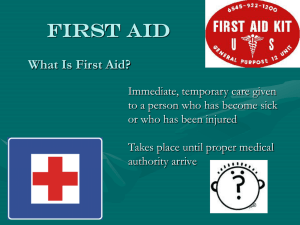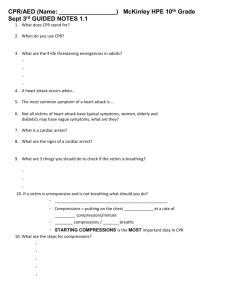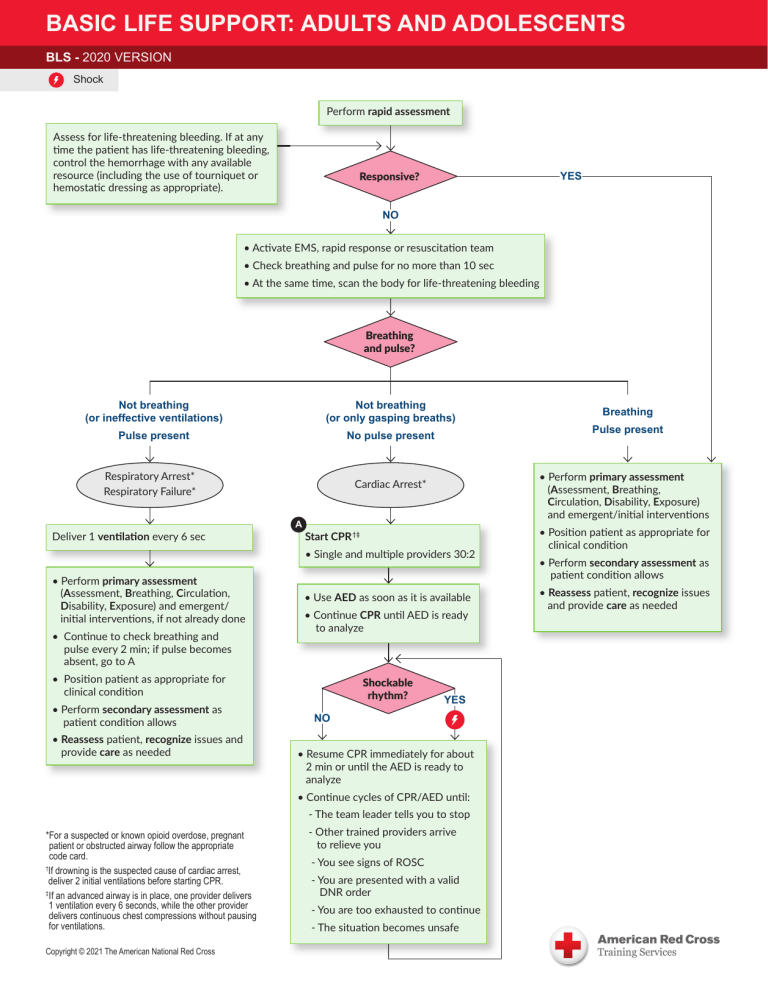
BASIC LIFE SUPPORT: ADULTS AND ADOLESCENTS BLS - 2020 VERSION Shock Perform rapid assessment Assess for life-threatening bleeding. If at any time the patient has life-threatening bleeding, control the hemorrhage with any available resource (including the use of tourniquet or hemostatic dressing as appropriate). Responsive? YES NO • Activate EMS, rapid response or resuscitation team • Check breathing and pulse for no more than 10 sec • At the same time, scan the body for life-threatening bleeding Breathing and pulse? Not breathing (or ineffective ventilations) Not breathing (or only gasping breaths) Pulse present No pulse present Respiratory Arrest* Respiratory Failure* Deliver 1 ventilation every 6 sec Start CPR †‡ • Single and multiple providers 30:2 • Perform primary assessment (Assessment, Breathing, Circulation, Disability, Exposure) and emergent/ initial interventions, if not already done • Continue to check breathing and pulse every 2 min; if pulse becomes absent, go to A • Use AED as soon as it is available • Continue CPR until AED is ready to analyze • Position patient as appropriate for clinical condition • Perform secondary assessment as patient condition allows • Reassess patient, recognize issues and provide care as needed Shockable rhythm? YES NO • Resume CPR immediately for about 2 min or until the AED is ready to analyze • Continue cycles of CPR/AED until: - The team leader tells you to stop *For a suspected or known opioid overdose, pregnant patient or obstructed airway follow the appropriate code card. † If drowning is the suspected cause of cardiac arrest, deliver 2 initial ventilations before starting CPR. ‡ If an advanced airway is in place, one provider delivers 1 ventilation every 6 seconds, while the other provider delivers continuous chest compressions without pausing for ventilations. Copyright © 2021 The American National Red Cross Pulse present • Perform primary assessment (Assessment, Breathing, Circulation, Disability, Exposure) and emergent/initial interventions Cardiac Arrest* A Breathing - Other trained providers arrive to relieve you - You see signs of ROSC - You are presented with a valid DNR order - You are too exhausted to continue - The situation becomes unsafe • Position patient as appropriate for clinical condition • Perform secondary assessment as patient condition allows • Reassess patient, recognize issues and provide care as needed BASIC LIFE SUPPORT: ADULTS AND ADOLESCENTS BLS - 2020 VERSION CPR Technique • Hand position: Centered on the lower half of the sternum Compression-to-ventilation ratio: 30:2 Switch CPR compressors • Every 2 min • During rhythm check • If provider is fatigued Copyright © 2021 The American National Red Cross • Depth: At least 2 inches (5 cm) Compressions • Rate: 100 to 120 per min • Full chest recoil: Compression and recoil times should be approximately equal • Open airway to past-neutral position. Use modified jaw-thrust maneuver instead if you suspect head, neck or spinal injury. • Each ventilation should last about 1 sec and make the chest begin to rise; allow the air to exit before delivering next ventilation. Ventilations • If an advanced airway is in place, one provider delivers 1 ventilation every 6 seconds, while the other provider delivers continuous chest compressions without pausing for ventilations.
